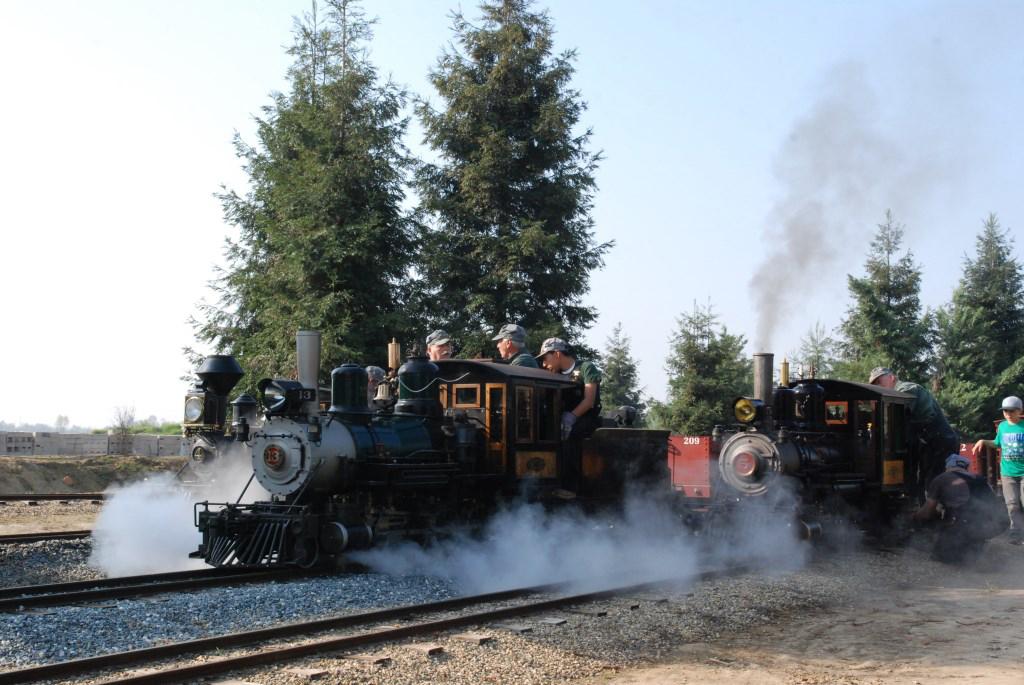Nestled in the heart of a historic grove of California giant Sequoia trees, the General Grant tree, in the Sierra Nevada mountains in Kings Canyon National Park—about one hour east of Fresno—stands tall as one of the world’s oldest and largest living things.
Today, General Grant is in the middle of a network of trails located just across the street from Grant Grove Village—a tourist area with a small grocery store, restaurant, visitor’s center, and gift shop on Highway 180.
Its associated trail is paved and sloped for easy access. Visitors can enjoy a quick walk amidst smaller groves of towering giant Sequoia trees, which have a unique red-orange bark. According to the National Parks Service, the trees thrive in the middle elevations of the Sierra Nevada and have been recorded living as long as 3,400 years.
In the early days of California, giant Sequoias were threatened by the logging industry. Loggers cut down many groves of Sequoia trees between 1862 and 1900, per the National Park Service.
The trees’ destruction sparked a national conservation effort to preserve American forests and wildlife. In 1890, following the establishment of Sequoia National Park, General Grant National Park was founded to preserve the tree and the smaller Sequoias surrounding it, according to the park service.
In 1940, General Grant and its many sister trees were absorbed into a 720 square-acre land acquisition spearheaded by President Franklin D. Roosevelt. This was when Kings Canyon National Park was established, according to Sequoia and Kings Canyon National Parks public affairs officer Holly Brown.
“It was the tree [General Grant] that caused the park to be established,” she told The Epoch Times.
Ms. Brown also said that General Grant is known as the “Nation’s Christmas Tree,” an honor bestowed on the living monument in 1926 by President Calvin Coolidge.
“So far as I am able to see at present only fire and the ax threaten the existence of these noblest of God’s trees,” wrote conservationist John Muir in his 1912 book, “The Yosemite.” Mr. Muir was instrumental in helping establish Sequoia National Park and founding the Sierra Club, an environmental advocacy group.
Fire plays a unique role in the ecosystem of a Sequoia. Ms. Brown said fire is required for the Sequoias to reproduce as when their cones drop to the ground and dry out, they open and release seeds on the forest floor when they encounter fire.
“Another thing that the fire does is, it clears away some of the smaller vegetation,” she said, creating a perfect environment for new Sequoia trees to grow.

Dangerous wildfires in the park have also come close to killing the General Grant tree over the years. In 2021, the KNP Complex fire killed 16 giant Sequoia groves encompassing more than 4,300 acres, according to the parks service.
“We lost quite a few Sequoias,” Ms. Brown said.
Kings Canyon National Park received just over 640,000 visitors in 2023, according to national parks records. This makes Grant Grove one of the quietest wildlife locations in the United States when compared to last year’s 13 million visitors to the Great Smoky Mountains National Park on the Tennessee-North Carolina Border or the nearly 15 million annual visitors to the Golden Gate National Recreation Center in San Francisco.
The visitor’s area in Grant Grove is free, offering exhibits about the history of the parks, the science of the Sierra environment, and the importance of ongoing conservation efforts. Guests can even pick up food at the Grant Grove Restaurant, featuring a diverse menu for hungry hikers seeking breakfast, lunch, or dinner.
Ms. Brown said visitors can also enjoy free ranger-led programs in the grove and throughout the parks to learn about mountain wildlife and the life cycle of the Sequoia trees.
Visitors can also currently access six hiking trails in the Grant Grove area, including the Sunset Loop trail or the Big Stump Loop trail, which guides visitors through an old Sequoia grove that was logged during the 19th century.






